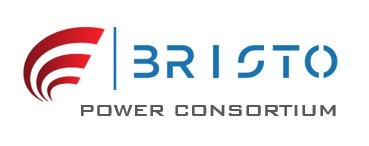
Transformers are a cornerstone of the modern electrical grid, and advancements in transformer technology are crucial for enhancing performance and sustainability. As the demand for efficient and eco-friendly energy solutions grows, innovative transformer designs and materials are paving the way for a more reliable and sustainable energy future. This blog explores some of the key innovations in transformer technology that are transforming the energy landscape.
High-Efficiency Core Materials:
One of the most significant advancements in transformer technology is the development of high-efficiency core materials. Traditional transformers use silicon steel cores, which are effective but have notable energy losses. Newer transformers are utilizing amorphous metal cores, which have a disordered atomic structure that reduces energy loss due to hysteresis and eddy currents. These amorphous cores can reduce core losses by up to 70%, significantly improving the overall efficiency of the transformer.
Smart Transformers:
Smart transformers, also known as intelligent transformers, are equipped with advanced monitoring and communication capabilities. These transformers have built-in sensors that collect real-time data on voltage, current, temperature, and other critical parameters. This data is transmitted to control centers where it can be analyzed to optimize performance, predict maintenance needs, and detect potential faults before they lead to failures. Smart transformers enhance grid reliability and efficiency by enabling proactive management and rapid response to changing conditions.
Eco-Friendly Insulating Fluids:
Traditional transformers often use mineral oil as an insulating fluid, which can pose environmental risks in the event of leaks or spills. Eco-friendly transformers are increasingly using biodegradable and non-toxic insulating fluids, such as natural esters derived from vegetable oils. These fluids have superior fire safety properties, higher biodegradability, and lower environmental impact. By adopting eco-friendly insulating fluids, transformers not only become safer but also more sustainable.
Solid-State Transformers:
Solid-state transformers (SSTs) represent a cutting-edge innovation that combines power electronics with traditional transformer functions. SSTs use semiconductor devices to convert and control power, offering greater efficiency, flexibility, and compactness compared to conventional transformers. They can operate at higher frequencies, which allows for smaller and lighter designs. SSTs also provide advanced functionalities such as voltage regulation, power factor correction, and seamless integration with renewable energy sources and smart grids.
Advanced Cooling Techniques:
Effective cooling is essential for maintaining transformer performance and longevity. Innovations in cooling techniques, such as the use of forced air, forced oil, and even superconducting cooling, are helping to improve transformer efficiency and reduce thermal losses. Advanced cooling methods can increase the load capacity of transformers, extend their operational life, and enhance their reliability under high-load conditions. These improvements are particularly important for supporting the increasing demand for electricity in urban and industrial areas.
Modular Transformer Designs:
Modular transformer designs are gaining popularity for their flexibility and ease of installation. These transformers are built using standardized, interchangeable modules that can be quickly assembled and configured to meet specific requirements. Modular designs simplify maintenance and upgrades, reduce downtime, and allow for scalable solutions that can grow with increasing demand. This approach also reduces manufacturing costs and environmental impact by promoting the reuse and recycling of components.
Enhanced Protection Systems:
Innovative protection systems are being integrated into modern transformers to enhance their safety and resilience. These systems include advanced circuit breakers, surge protectors, and fault detection technologies that can quickly isolate faults and prevent damage to the transformer and the surrounding grid. Enhanced protection systems improve the reliability of electricity supply and reduce the risk of power outages and equipment failures.
Conclusion:
Innovations in transformer technology are driving significant improvements in performance, efficiency, and sustainability. High-efficiency core materials, smart transformers, eco-friendly insulating fluids, solid-state transformers, advanced cooling techniques, modular designs, and enhanced protection systems are transforming the way transformers operate and interact with the electrical grid. These advancements are crucial for meeting the growing demand for electricity, integrating renewable energy sources, and building a more sustainable and reliable energy infrastructure. As technology continues to evolve, the future of transformers looks brighter, paving the way for a greener and more efficient energy landscape.


